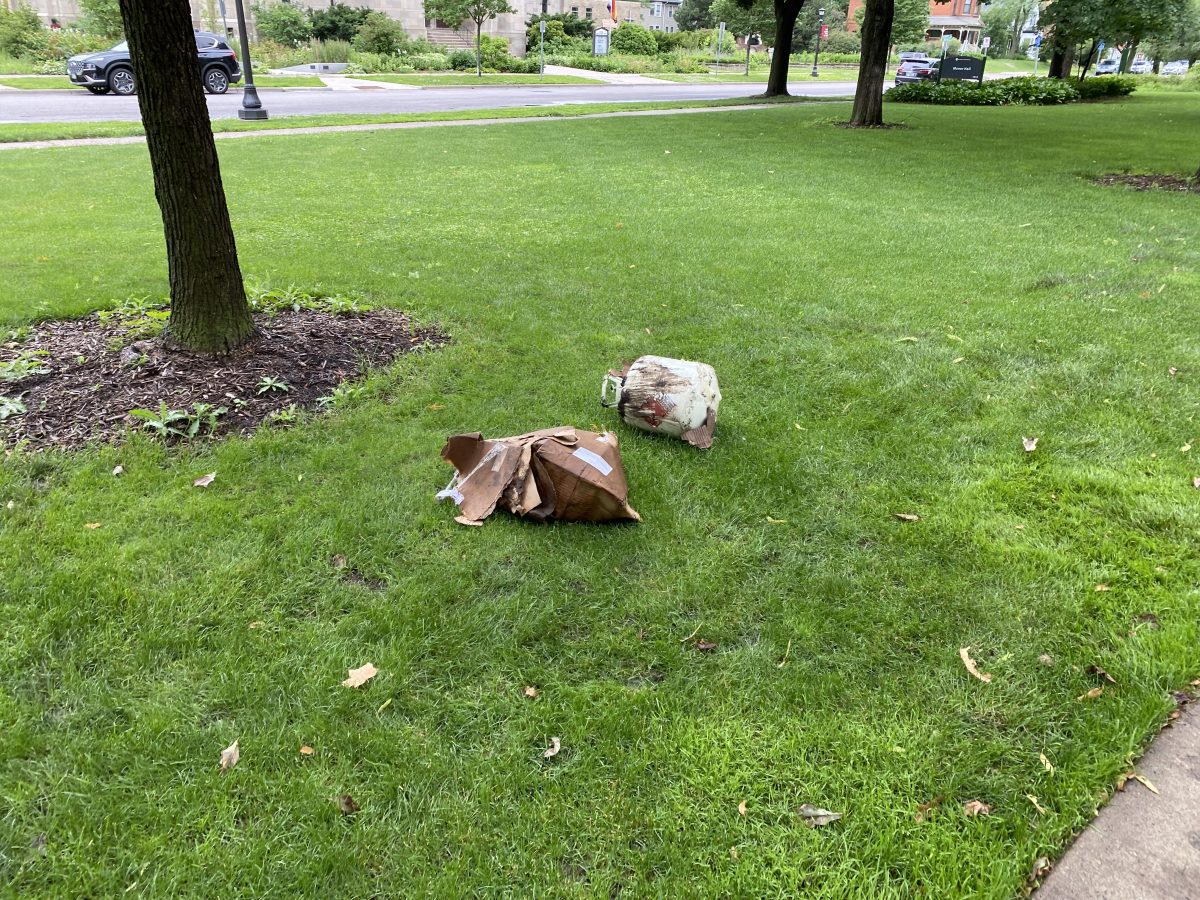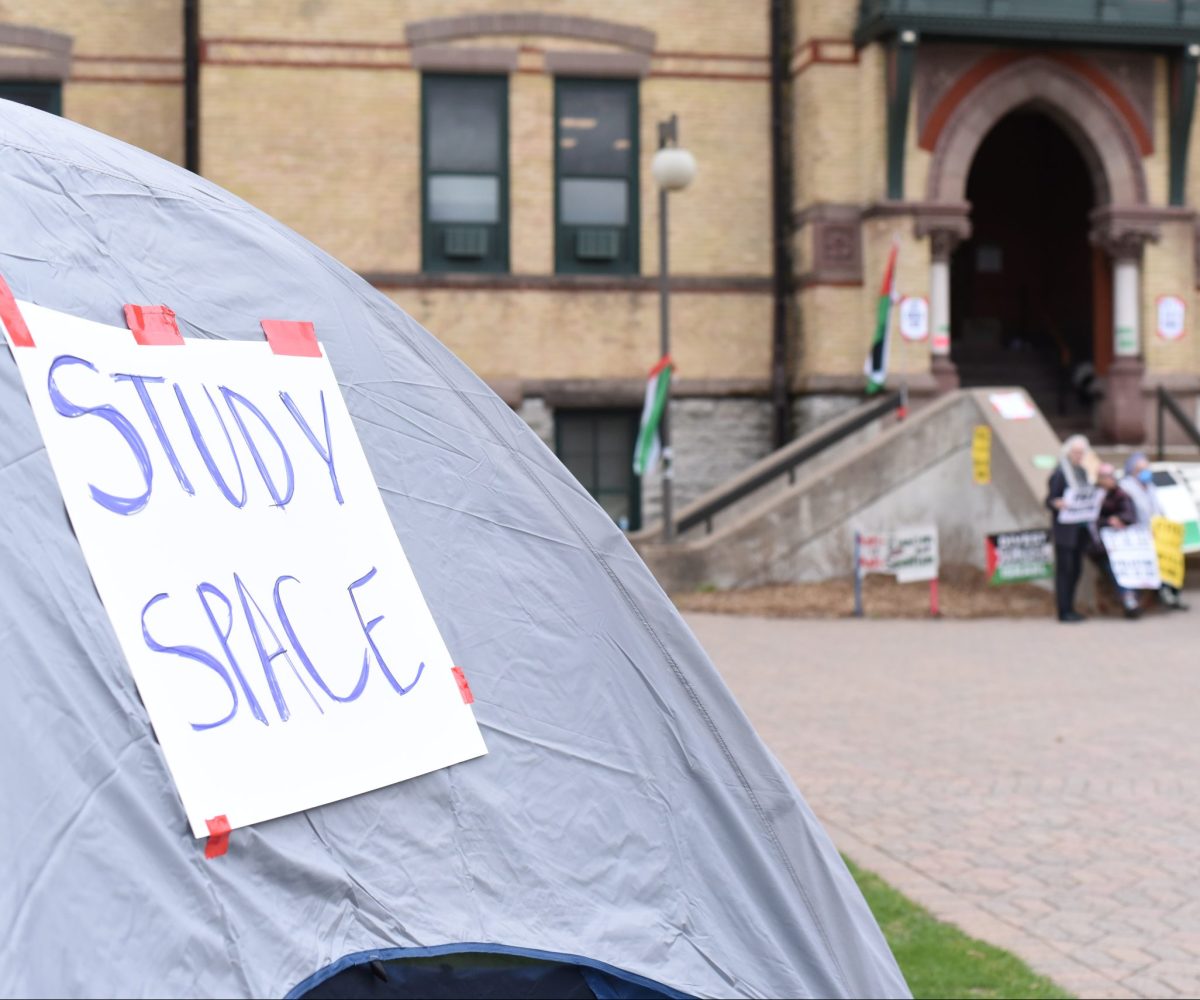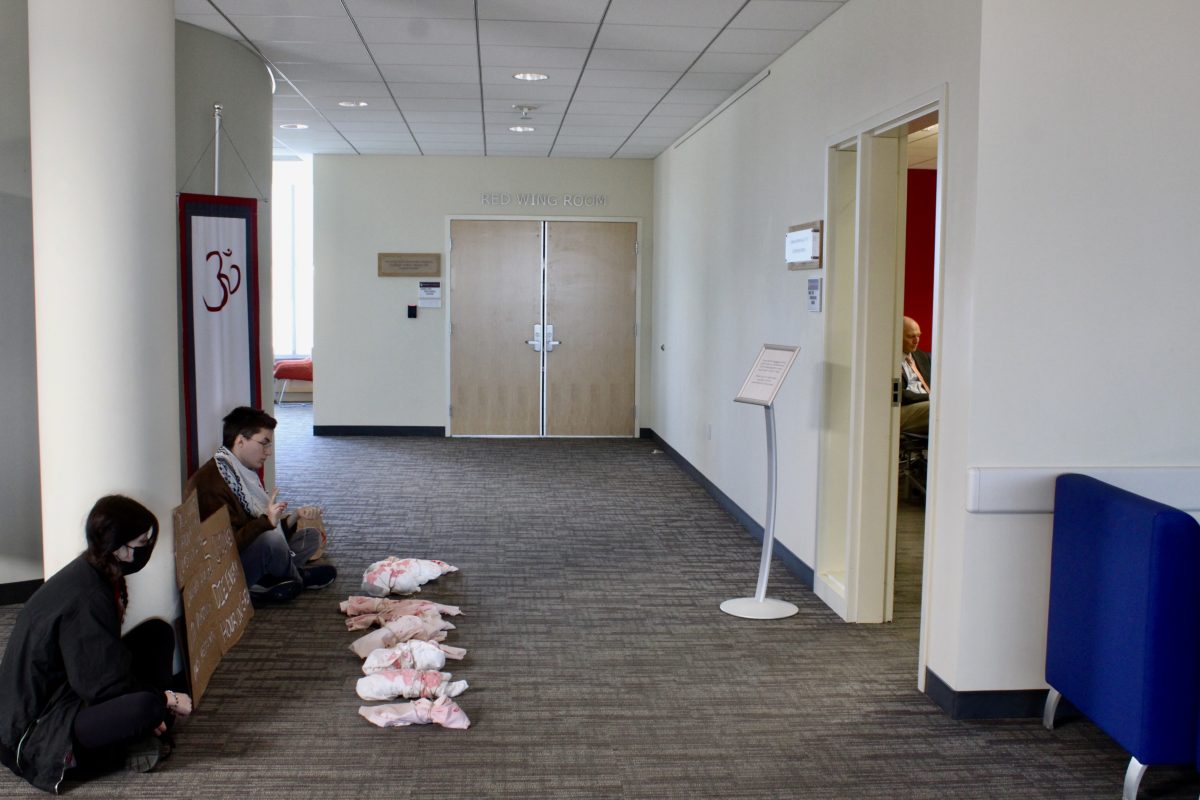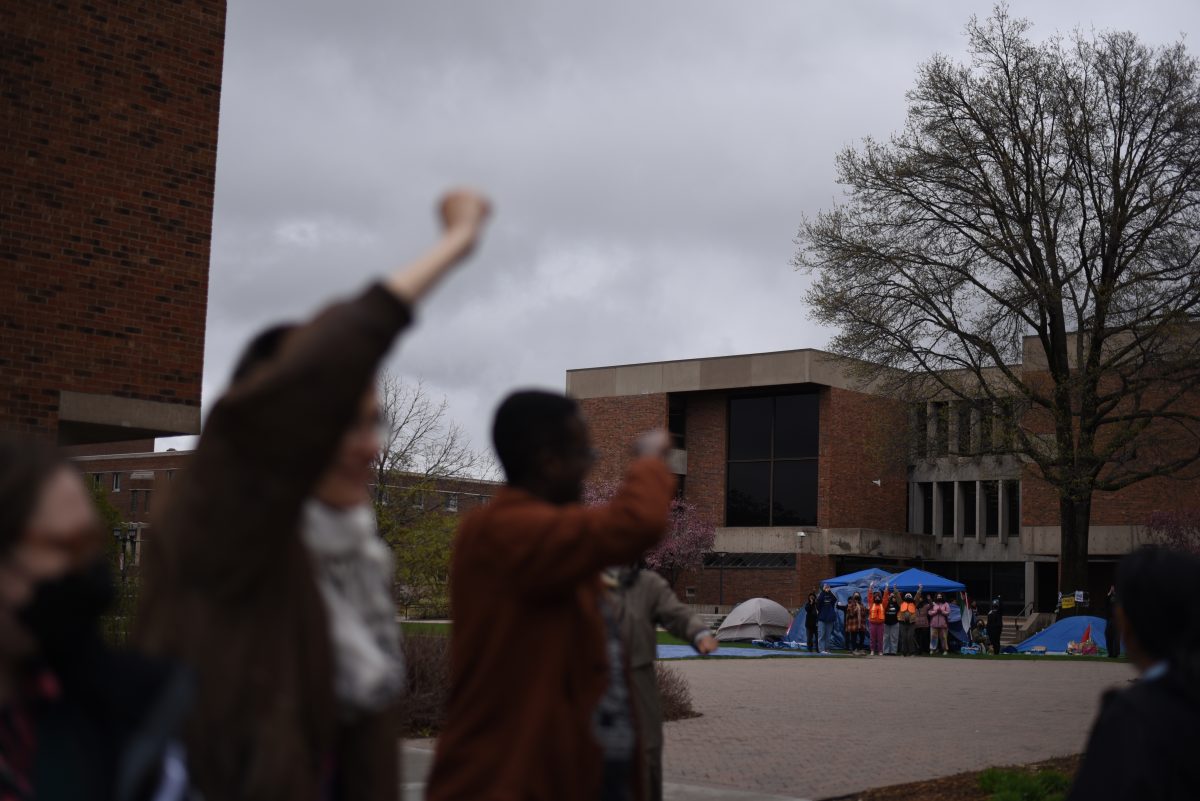Both basketball programs made waves across campus early this semester with runs to the playoffs for each, kicking up sporting event attendance and Piper sporting pride amongst students. The men’s roster especially collected crowds at their Minnesota Intercollegiate Athletic Conference (MIAC) championship game against Gustavus Adolphus on Feb. 24.
Joshua Hersch took over the role of Women’s Basketball Head Coach this season after Alex Focke transitioned into Athletic Director and Assistant Vice President following Jason Verdugo’s departure to University of Wisconsin Eau-Claire. Despite a five game skid in the midseason, the women’s team’s strong start and continued tenacity secured them a spot in the first round of the playoffs. They unfortunately fell to number three seed St. Catherine’s in the first round, but made sure to bring it to double overtime.
This historic season marks the second time the men’s basketball team has ever made it to the MIAC championship playoff game. Before coaching the women’s team and holding the responsibilities of Compliance Director, he served as an assistant men’s basketball coach under current Head Men’s Basketball Coach Jim Hayes.
Alumni make us stronger
Hayes has been leading his alma mater’s men’s team since 2013, less than twenty years after his graduation from Hamline in 1994 — during which he served as an assistant coach and administrative assistant in the Hamline athletic department.
Alumni and current Senior Associate Director of Athletics Beth Rittler has been working in the athletics department since 2005 and was recently promoted to senior associate after having held the associate director title for 17 years. Rittler was a swimmer during her time at Hamline. Rittler has served in a number of committee positions, currently including Hamline University Staff Association executive board as co-treasurer, Title XI Committee, Piper Athletic Association and Campus Operations and Service Providers Committee.
Other former Hamline athletes that currently hold head coaching roles at Hamline include head baseball coach Jim Weyandt, Devin Monson of the men’s and women’s cross country and track teams and men’s hockey head coach Shane Wagner. Numerous assistant coaches have degrees and subsequent careers at Hamline as well, such as Lindsey Bernardy of the track and women’s basketball team as well as a member of the undergrad class of 2022. Alumni also make up a noticeable portion of the sporting event attendees on campus.
“I would say students, family members, alumni, I would say that’s the bulk of fans we see,” head football coach Chip Taylor said.
In an email response to The Oracle about the financial support received from alumni, Focke noted simply: “We are very fortunate to have alumni that are so passionate about Hamline University. We love to see the support from the alumni and want to continue to find ways to engage with them.”
Maintaining a competitive team
Football’s Head Coach Chip Taylor started at Hamline in 2013 as the defensive coordinator for the football team under former Head Coach Chad Rogosheske. Taylor assumed the role of head coach in 2016 and immediately led the team to their best record in almost two decades, ending the season at 5–5. He describes coaching Hamline football as his “dream job” and knows his players to be competitive and invested in their team.
“Athletically it’s a really good football league,” Taylor said. “The MIAC is a very, very, very challenging league. Our guys want to play at the highest level that they can and this is a good spot for them.”
Players who come to the Hamline Football team tend to stay on the team, despite the introduction of the NCAA transfer portal into Division III athletics, which gives student athletes the opportunity to enter the portal and transfer schools at will. The portal is a compliance tool that provides relevant athletic and academic information to the transfer process and allows schools to view information about potential transfers once they enter.
As Hamline looks to grow revenue as the nation faces a demographic cliff in college students, retention in the athletic department is a concern the NCAA transfer portal could exaggerate. However, two years into the expansion of the portal to include DIII athletes, the football team has seen very few players hop into the portal at all.
“I think the negative part of it is I feel like it doesn’t teach young people how to fight through adversity when things don’t go their way, how to persevere,” Taylor said in reflection to larger schools, who are seeing players leaving their teams after only a season or two.
Hamline Athletics bring in an estimated 25% of the student body as athletes in one or more of the varsity programs. Maintaining the quality, accessibility and inclusivity of the programs directly affects the campus population and is vital to the financial health of the university.
“Let me tell you: starting on a varsity team is through the roof for retention. [Generally,] you start on a varsity team, you graduate,” Interim Provost Andy Runquist said.
As student athletes make up a distinct proportion of the student body and student fee, campus culture is directly tied to the health of the athletic department. Additionally, a healthy athletics program greatly affects the demographics of a university, and ensuring the maintenance of the existing programs also ensures balance in the student body.
“Football’s actually a big player at every school on the gender balance,” Rundquist said. “Biggest roster and all guys.”
Student culture on campus between athletes and non athletes has occasionally been described as ‘divided’ by both parties, due to intense practice and game schedules and limited social interactions within the circle of athletics. However, Hamline faculty and administration are described as accessible for collaboration and problem-solving, and do not isolate the athletes from academic opportunities that other non athletes enjoy.
“The smallness of the campus, the ability to pick up the phone or email a professor and to get right back to you if I have an issue with the student, being able to have a lot of touch points with administration, they’re pretty open and I think they want they want to see us do well, and they they allow us to have access to them,” Taylor said of the individuality of Hamline’s offerings. “That doesn’t happen everywhere, and that’s been the case here.”
Specifically, Focke has been described by student athletes and coaches alike as a huge asset to the Athletics Department administration in his leadership style as well as in his very recent experience of being a head coach at Hamline himself.
“His big thing is when one program wins, everybody wins. And I do like that, I like that mindset,” Taylor said.
Ensuring that athletes at Hamline also get to be college students and feel supported in their academic work is a huge advantage of the intimate campus, and fosters community and connection between students, faculty and staff alike.
“Professors are here to watch you succeed. They’re going to help you, they’re going to be advocating for you, but at the same time, that’s built on personal relationships,” senior Defensive Specialist of the football team, Caleb Lueders said.
Personal relationships that link athletes and academics at Hamline are an intentional part of the model of collaboration built between the administrative vice presidents, focused on a student experience that is accessible to a best-of-both-worlds seeking student. There is a high priority to create a competitive environment athletically and academically.
“I love that their mantra over there is classes before practice,” Rundquist said.
Athletics in the midway
Extending that community into the local neighborhood, the football team, along with many of the athletic programs at Hamline, collaborates with local elementary school Hamline Elementary to engage athletes with elementary students in a unique partnership. Athletes host field trips for the elementary students, they volunteer their time as tutors and lunch buddies and work as counselors in the All Sports Camp during the summer.
“I would say that is the best or biggest way that we interact with the Midway community,” sophomore women’s basketball player Sophie Stork said of the programs.
While student attendance at Hamline games is already low, there is a distinct lack of gameday support from the Midway community. Director of Sports Information David Nelson attributes this to Hamline’s location. He has previously worked at universities located in smaller towns and noticed that community attendance is much higher there.
“I have worked at five different schools. … When I have worked at schools in a smaller town, you see more community members there just because that is all they have to do; there is not much to do in a smaller town. Because we are placed in a major metropolitan area, you are not going to see much community out at games. It is not anyone’s fault, it is just circumstance. It is important to drive the point home to students and family members to come and support us because we are relying on them,” Nelson said.
Athletes expressed that they have a few initiatives to reach out to the community, specifically Hamline Elementary and Special Olympics of Minnesota, but do not always feel they get that support at home games back.
“A lot of parents obviously come in support, and then home games, we do see a decent student body,” Stork said. “But just strictly community members that aren’t necessarily directly related to a player or they aren’t an alumni I would say that we don’t see a lot. It would be nice to have that, but I think we’re lacking there.”
The elementary school, located directly across the street from Hamline University, is one of the biggest beneficiaries of the athletic department’s investment in the community. The collaboration between Hamline Elementary and Hamline University is a decades-old connection that encourages intergenerational learning opportunities and a chance for Hamline students on both sides to learn from folks who are not their teachers. This distinctive opportunity for real-life application is another facet of the Hamline educational experience that athletes receive at Hamline.
Alex Troy, the Hamline to Hamline Collaboration Program Coordinator, loves to welcome programs to engage elementary students with university students for unique learning opportunities and community building experiences.
“That’s just cool to learn from people who [students] don’t get to see every day, and then potentially spark an interest that could make them excited about something,” Troy said.












